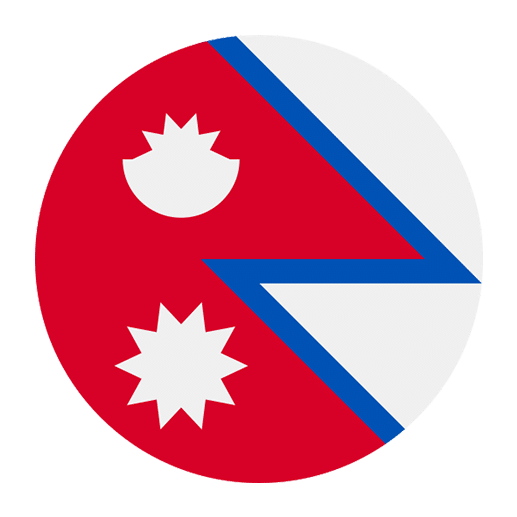Learning how to form compound adjectives in Nepali can be a rewarding endeavor for language enthusiasts. Compound adjectives are not only a fascinating aspect of Nepali grammar but also enrich your vocabulary and help you express more complex ideas. In this article, we will delve into the structure and usage of compound adjectives in Nepali, offering you a comprehensive guide to master this important grammatical element.
Understanding Compound Adjectives
Compound adjectives are adjectives that are formed by combining two or more words to function as a single descriptor for a noun. They are essential for providing specific, nuanced descriptions. For example, in English, terms like “well-known,” “high-speed,” and “blue-eyed” are compound adjectives.
In Nepali, compound adjectives serve a similar purpose. They allow speakers to be more precise and detailed in their descriptions. Understanding how to form and use these adjectives will significantly enhance your ability to communicate in Nepali.
Basic Structure of Compound Adjectives in Nepali
Nepali, like many other languages, forms compound adjectives by combining different grammatical elements. Typically, these combinations can include:
1. Adjective + Noun
2. Noun + Adjective
3. Adjective + Adjective
4. Noun + Noun
Let’s explore each of these structures in more detail.
1. Adjective + Noun
In this structure, an adjective modifies a noun to create a compound adjective. For example:
– ठूलो घर (Thulo Ghar) – Big House
– मीठो खाना (Mitho Khana) – Tasty Food
When these words are used together to describe another noun, they form a compound adjective. For instance:
– ठूलो घरवाला (Thulo Gharwala) – Big House Owner
– मीठो खानाले भरिएको (Mitho Khanale Bhariyeko) – Filled with Tasty Food
2. Noun + Adjective
In some cases, a noun can precede an adjective to form a compound adjective. This structure is less common but still useful. For example:
– सुनौलो बालक (Sunaulo Balak) – Golden Child
– पानिलो पानी (Panilo Pani) – Salty Water
When these nouns and adjectives are combined to describe another noun, they form compound adjectives:
– सुनौलो बालकको भविष्य (Sunaulo Balakko Bhavishya) – Future of the Golden Child
– पानिलो पानीको स्वाद (Panilo Paniko Swad) – Taste of Salty Water
3. Adjective + Adjective
This structure involves combining two adjectives to create a compound adjective. For example:
– लामो र सानो (Lamo Ra Sano) – Long and Short
– नयाँ र पुरानो (Naya Ra Purano) – New and Old
When used together to describe another noun, these pairs form compound adjectives:
– लामो र सानो सडक (Lamo Ra Sano Sadak) – Long and Short Road
– नयाँ र पुरानो किताब (Naya Ra Purano Kitab) – New and Old Book
4. Noun + Noun
Finally, two nouns can be combined to form a compound adjective. This structure often describes a relationship or characteristic associated with the nouns. For example:
– रातोदिन (Rato Din) – Day and Night
– माटोमाटो (Mato Mato) – Soil and Dirt
When these compound nouns are used to describe another noun, they function as compound adjectives:
– रातोदिनको संघर्ष (Rato Din Ko Sangharsha) – Struggle of Day and Night
– माटोमाटोको खेती (Mato Mato Ko Kheti) – Farming of Soil and Dirt
Forming Compound Adjectives with Connective Particles
Nepali often uses connective particles to link words together when forming compound adjectives. These particles can include:
1. “Ra” (र) – And
The particle “Ra” is used to connect two adjectives or nouns, forming a compound adjective. For example:
– राम्रो र सस्तो (Ramro Ra Sasto) – Good and Cheap
– हरियो र पीलो (Hariyo Ra Pilo) – Green and Yellow
When these pairs describe another noun, they form compound adjectives:
– राम्रो र सस्तो बस्त्र (Ramro Ra Sasto Bastra) – Good and Cheap Clothes
– हरियो र पीलो झण्डा (Hariyo Ra Pilo Jhanda) – Green and Yellow Flag
2. “Ko” (को) – Of
The particle “Ko” is used to show possession or association between two nouns, forming a compound adjective. For example:
– घरको मालिक (Ghar Ko Malik) – Owner of the House
– गाडिको चालक (Gadi Ko Chalak) – Driver of the Car
When these pairs describe another noun, they form compound adjectives:
– घरको मालिकको निर्णय (Ghar Ko Malik Ko Nirdesh) – Decision of the House Owner
– गाडिको चालकको अनुशासन (Gadi Ko Chalak Ko Anushasan) – Discipline of the Car Driver
Common Compound Adjectives in Nepali
To help you get started, here are some common compound adjectives in Nepali along with their translations:
– होशियार र चतुर (Hoshiyaar Ra Chatur) – Clever and Intelligent
– धनी र सम्पन्न (Dhani Ra Sampanna) – Rich and Prosperous
– ठुलो र सानो (Thulo Ra Sano) – Big and Small
– पुरानो र नयाँ (Purano Ra Naya) – Old and New
– सुन्दर र आकर्षक (Sundar Ra Aakarshak) – Beautiful and Attractive
Practical Tips for Using Compound Adjectives
Now that you have a basic understanding of how to form compound adjectives in Nepali, here are some practical tips to help you use them effectively:
1. Practice with Common Phrases
Start by practicing with common compound adjectives and phrases. Use them in sentences to describe people, places, and things. For example:
– यो घर ठूलो र राम्रो छ। (Yo Ghar Thulo Ra Ramro Chha.) – This house is big and nice.
– त्यो किताब पुरानो र महँगो छ। (Tyo Kitab Purano Ra Mahango Chha.) – That book is old and expensive.
2. Listen and Learn
Listen to native Nepali speakers and pay attention to how they use compound adjectives. This will help you understand the natural usage and context. Watching Nepali movies, TV shows, and listening to Nepali songs can be particularly helpful.
3. Expand Your Vocabulary
As you continue to learn Nepali, focus on expanding your vocabulary. The more adjectives and nouns you know, the more compound adjectives you can create. Use language learning apps, flashcards, and other resources to build your vocabulary.
4. Practice Writing
Writing is an excellent way to reinforce what you’ve learned. Try writing short paragraphs or essays using compound adjectives. Share your writing with a language partner or tutor for feedback.
Exercises for Mastery
To solidify your understanding and proficiency in forming compound adjectives in Nepali, here are some exercises you can practice:
1. Translate the Following Sentences into Nepali:
a. The red and white flowers are beautiful.
b. This old and dusty book is interesting.
c. She is a clever and hardworking student.
d. The big and expensive car is parked outside.
e. He has a small and cozy house.
2. Combine the Following Words to Form Compound Adjectives:
a. मीठो (Mitho) + खाना (Khana)
b. पुरानो (Purano) + साथी (Sathi)
c. ठुलो (Thulo) + मान्छे (Manchhe)
d. सस्तो (Sasto) + बस्त्र (Bastra)
e. हरियो (Hariyo) + झण्डा (Jhanda)
3. Create Sentences Using the Compound Adjectives You Formed:
a. ________________________________________________________________________
b. ________________________________________________________________________
c. ________________________________________________________________________
d. ________________________________________________________________________
e. ________________________________________________________________________
Conclusion
Mastering compound adjectives in Nepali can greatly enhance your ability to describe and communicate effectively. By understanding the basic structures, practicing with common phrases, and expanding your vocabulary, you will be well on your way to using compound adjectives with confidence.
Remember, language learning is a journey, and practice is key to success. Keep practicing, stay curious, and immerse yourself in the rich linguistic and cultural tapestry of Nepali. Happy learning!

